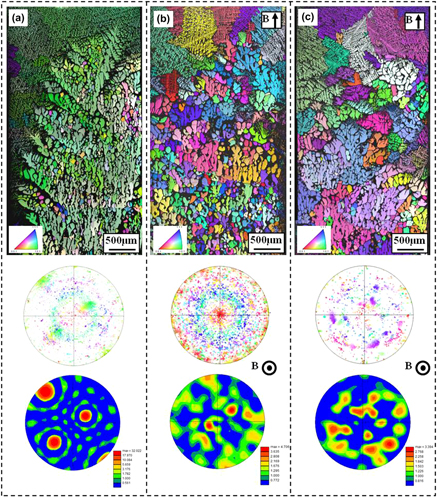Article contents
Effect of a high axial magnetic field on the structure of directionally solidified Al–Si alloys
Published online by Cambridge University Press: 17 March 2015
Abstract

The effects of an axial high magnetic field on the growth of the α-Al dendrites and the alignment of the iron-intermetallics (β-AlSiFe phases) in directionally solidified Al–7 wt% Si and Al–7 wt% Si–1 wt% Fe alloys were investigated experimentally. The results showed that the application of a high magnetic field changed the α-Al dendrite morphology significantly. Indeed, a high magnetic field caused the deformation of the α-Al dendrites and induced the occurrence of the columnar-to-equiaxed transition (CET). It was also found that a high magnetic field was capable of aligning the β-AlSiFe phases with the <001>-crystal direction along the solidification direction. Further, the Seebeck thermoelectric signal at the liquid/solid interface in the Al–7 wt% Si alloys was measured in situ and the results indicated that the value of the Seebeck signal was of the order of 10 µV. The modification of the α-Al dendrite morphology under the magnetic field should be attributed to the thermoelectric magnetic force acting on the α-Al dendrites. The magnetization force may be responsible for the alignment of the β-AlSiFe phases under the magnetic field.
- Type
- Articles
- Information
- Copyright
- Copyright © Materials Research Society 2015
References
REFERENCES
- 7
- Cited by


